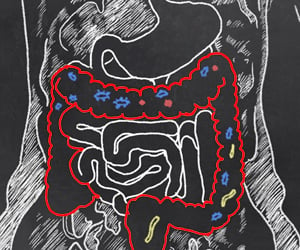Active community monitoring can identify lead in food products such as candy, so they can be recalled before too many people have eaten them.

‘Initially, lead poisoning can be hard to detect, even people who seem healthy can have high blood levels of lead. Signs and symptoms usually don't appear until dangerous amounts have accumulated.’





For many years, the state health department's Food and Drug Branch has routinely prepared and disseminated health alerts to regional and county public health programs, practicing community clinicians, and the general public warning of potentially toxic food exposures. But until the 2006 law mandated a surveillance program, the CDPH did not test widely for lead in candy. The new study shows that in the six years before the law went into effect--from 2001 to 2006--just 22 percent of the alerts about food contamination involved lead in candy. Once the program was implemented, however, 42 percent of the food contamination alerts issued by state health officials were for lead in candy--nearly all of it imported--which was more than the total for Salmonella, E. coli and botulism, according to an analysis of alerts issued between 2001 and 2014. The study was published Oct. 26, 2017 in Environmental Health Perspectives.
Lead is a toxic heavy metal that can cause developmental delays, neurological damage, hearing loss, and other serious health problems in young children and adults. The study found that active community monitoring can identify lead in food products such as candy, so they can be recalled before too many people have eaten them. Without such testing, health investigators must wait until after children have been poisoned to look for the sources, which is especially difficult when the source is as perishable as candy.
"With this policy change identifying lead sources is more upstream and community-based," said Margaret Handley, PhD, MPH, a professor of Epidemiology and Biostatistics at UCSF and the first author of the study. "By testing candy and issuing alerts when foods are found to be contaminated, we can identify and remove sources of lead before children become poisoned."
As many as 10,000 California children under the age of six are poisoned by lead each year, and 1,000 of them are exposed to very high levels of the toxic metal. Most efforts to reduce exposure focus on the lead found in gasoline and industrially contaminated soil, as well as lead-based paint, which children take in when they eat paint chips or breathe in dust.
Advertisement
Over the 14-year study period, state public health officials issued 164 health alerts for food contamination. Of these, 60 were lead-related and 55 of those were for imported food, mostly candy from Mexico (34 percent), China (24 percent), and India (20 percent). Two alerts were issued for imported foods that were not candy: one for a toasted grasshopper snack called chapuline, the other for spices.
Advertisement
Since the candy testing program is not comprehensive the researchers said the true number of contaminated candies and other foods on the market could be even higher.
"As more lead sources are identified we must develop prevention approaches for all of them, and not just replace one prevention approach with another," Handley said. "If there is anything we have learned from the lead poisoning disaster in Flint, Michigan, it is not to oversimplify or cut corners when it comes to identifying and removing sources of lead poisoning."
Source-Eurekalert











